From what’s behind your frequent flier file to speaking the world’s only true international language.
Airport Buses

Well, that’s because you are!
But have you ever wondered where those buses come from? The COBUS 3000 is built in Germany, and since it first appeared at Zurich Airport in 1978 it has practically cornered the market in terminal transport.
Even if you don’t recognize the name you’d recognize the vehicle – the distinctive buses are long, wide and close to the ground and mark the start and often end of many great adventures!
Each bus can carry up to 112 jet-lagged, duty free-laden, gently swaying people on a carefully marked route around terminal buildings, across tarmacs and beneath the tails of towering jets.
With more than 3,000 vehicles currently at over 350 airports around the world, the COBUS 3000 is as common a sight on airport ramps around the world as aircraft, baggage containers and runway lights. Who knew that little bus had such an illustrious history?
Behind The Boarding Pass

But boarding passes are more than just your entryway onto an aircraft’s jet way. Those bar codes and jumbles of letters and numbers contain heaps of information beyond the obvious bits like your name, flight number and seat, the airline’s file number for you (known as a record locator), and your frequent flier number.
This is all great for the airline – but also a potential goldmine for unsavory sorts. Identity theft is a big concern and the information on a boarding pass can not only provide access to your airline file, but possibly a great deal more if you have a detailed profile in your frequent flier account that includes your address, email and other items you don’t want falling into the wrong hands.
So next time you’re traveling, keep your boarding pass safe until such time as you can safely shred or delete it. Sometimes, these days, everything just feels sinister.
Criminal Record
It’s well known that anyone with a criminal record may have difficulty traveling to the United States. But did you know that also applies to just passing through the country if on a connecting flight to somewhere else?
The U.S. Immigration and Nationality Act states that anyone found guilty of committing a “crime involving moral turpitude” will be denied entry – and yes, that feels like a strange phrase to actually utter!
Such crimes include the obvious like murder, rape and bank robbery, but also extend to things like forgery, destruction of property, perjury and being an accomplice to a crime. Generally speaking, if your crime is a first offense and doesn’t involve drugs, and the sentence was less than six months in jail, the U.S. will likely grant a petty offense exemption.
This is from U.S. Customs and Border Protection: “At this time, driving under the influence, breaking and entering, disorderly conduct and simple assault are not considered crimes that make a person inadmissible to the U.S.”
If not, whether you’re heading to California for a week or spending an hour in Miami International Airport connecting to a flight to Brazil, you’ll need to apply to the U.S. Department of Homeland Security for what’s called a U.S. Waiver of Inadmissibility. There’s no guarantee of success, the process can take months, and even if you get one it may only be a one-time waiver, not a permanent clearance. So just be good people!
Danger! Deep Vein Thrombosis
There are many afflictions common with travelers but few nicknamed after them. Unlike many travel maladies, Deep Vein Thrombosis (DVT) isn’t contracted by unclean water or insect bites and there’s no vaccination to prevent it.
However, there are things that can be done to lower the risk of developing it. DVT is the formation of a blood clot, often in the leg. In extreme cases the clot can travel to the lung and cause a possibly fatal pulmonary embolism.
Although not limited to fliers, the mere fact that two of its nicknames are “Economy Class Syndrome” and “Traveller’s Thrombosis” hint at the link between it and jetsetters. DVT has a number of causes including prolonged inactivity, such as embarking on a long flight. Although indications of it can include a swollen or painful leg, there are often no symptoms at all.
In order to reduce risk passengers should move or exercise their legs as much as possible on a flight, even (and especially) when seated, and should consider wearing compression stockings. Doesn’t make you old, people (not that there’s anything wrong with that!).
Esperanto
Anyone who has traveled extensively knows how tricky it can be to navigate a country in which you don’t understand the language and can’t read the alphabet. It’s one thing to muddle through in France or Spain, but quite another to cope in rural South Korea or China.
In the 1870s, a Polish ophthalmologist named L. L. Zamenhof set about to create a universal language. He called it “Esperanto,” and it draws two-thirds of its vocabulary from the Romance languages (Spanish, French, Portuguese, Italian and Romanian), one-third from German, and uses a Latin script alphabet.
Although Esperanto didn’t quite catch on the way he had hoped, Zamenhof would likely be pleased to know that according to the Universal Esperanto Association, there are a reported two million Esperanto speakers in the world today.
There’s also an Esperanto Wikipedia, and it’s even included in Google Translate. Although it’s most widely spoken in Europe, East Asia and South America, the chances of finding someone in a market in Cusco, Peru who speaks it and can help with directions are, unfortunately, rather slim. But sometimes, it’s just the thought – the effort at universal peace and understanding – that counts. Esperas ci estas helpema!
Flight Connection Times

This can vary from airline to airline, from airport to airport, and takes into consideration such things as the amount of time it takes to transfer your bags, as well as how long it will likely take you to make that same journey.
While connection times are calculated to be as convenient as possible so you don’t have to spin your wheels in the departure lounge for six hours, airlines also don’t want you arriving at your destination without your luggage!
If you book a connection that’s tighter than permitted, don’t expect much sympathy or assistance if you arrive late at the second gate.
But if you book what’s referred to as a legal connection, the airline is required to rebook you on the first available flight to your ultimate destination if the delay was their fault. So plan accordingly and relax – generally, you don’t have to be Usain Bolt to get to your connecting flight!
Greek Weddings

Even in countries that mandate that all nutritional information be divulged, many food establishments still don’t tell you everything in a dish. They will likely forewarn you of nuts due to life-threatening allergies, but may not warn of the inclusion of coriander – the polarizing leafy green that turns some people into slavering werewolves!
Elsewhere in the world, it’s often even more difficult to know what’s in your food: a nice pasta sauce just might include unadvertised meat; a bowl of rice may have an anonymous egg; a gravy may have been thickened with unannounced gluten; and a soup may contain hidden shellfish.
If your diet is restricted by health, religion or preference, research the local food specialities of your destination so you know before you go and know before you order. And keep a translation app or dictionary close at hand
Hats Off to Hartsfield-Jackson International
According to the CIA World Factbook, there were 41,821 airports in the world in 2013, ranging from just one each in places like Aruba, Malta and Tuvalu, to 13,513 in the United States alone. As anyone who has ever travelled knows, not all airports are the same – some are wooden shacks beside a lone dirt runway, while others house sprawling complexes that offer more stores than your local mall.
One of the busiest airports in the world is currently Hartsfield-Jackson Atlanta International Airport in Georgia, U.S.A., which saw more than 101 million passengers pass through its glass-windowed walls in 2015 alone.
The airport was named after two former Atlanta mayors: William B. Hartsfield, who famously called Atlanta “the city too busy to hate” when its public schools were desegregated in 1961; and Maynard Jackson, the city’s first black mayor, who was a powerhouse in the 1970s, 80s and 90s.
Still the longest-serving mayors in Atlanta history, both made aviation development a priority and were central to making the airport into the international hub it is today.
But they’re not the only locals to be honored with an airport – there’s Louis Armstrong International in New Orleans and Birmingham-Shuttlesworth International Airport in Alabama, named after Fred Shuttlesworth, a maverick American civil rights leader who worked alongside Dr. King; Lech Walesa Airport in Gdansk, Poland, where the shipyard worker turned Solidarity leader stood up to Communist rule that ended with the fall of the Berlin Wall; and Robin Hood Airport Doncaster-Sheffield in England, where it’s said baggage handlers honor their namesake by taking fancy luggage from the rich and giving them to the poor. (Well, that last part is not actually not true.)
Infestations Ignored at Peril

Some suggest this is because of restrictions on harsh insecticides here that are still permitted elsewhere; but whatever the reason, before taking residence in your room you should take a few simple precautions.
From checking online for reports of infestations in your hotel, to checking the mattress for blood-spots, take some time to search for evidence of bed bugs; keep your luggage sealed in plastic bags and never place your bags on carpets or a spare bed, unless you want to return home with more than just shot glasses and fridge magnets.
Jumbo Jumbo Jet!
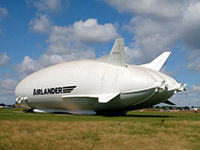
The Airlander 10 – a combination airship, helicopter and plane – is built by Hybrid Air Vehicles of England (HAV) and is currently undergoing test flights. The airship measures 92 meters in length (compared to the 70.6-metre-long Boeing 747-400 and the 73-metre-long Airbus A380), can cruise at 148 km/h, and according to its website can – incredibly – stay aloft for up to five days if manned and two weeks unmanned. How is that even possible?!
Originally designed as a military vehicle, HAV are now developing their aircraft for civilian uses, including the possibility of making it an airliner with a customized luxury passenger cabin beneath.
So next time you complain you don’t have enough time to watch all the movies you want on your transatlantic crossing, consider passage on the Airlander 10, where you could feasibly watch 19 two-hour feature films back-to-back. (Probably best not to choose the 1975 epic, The Hindenburg.)
King Arthur Redux
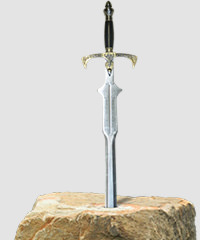
While you were able to watch the movie everywhere, real fans will settle for nothing less than following in the footsteps of the legendary king… all the way to Camelot. Despite some disputing whether the 1,500-year-old king ever existed, there is no shortage of alleged Camelots scattered throughout England and Wales.
One of the best to visit is Tintagel Castle in Cornwall, a stone and rubble medieval ruin that some claim was the site of Arthur’s conception and a stomping ground of magical Merlin. South Wales offers Caerleon, an ancient Roman legionary fort, while Somerset in southwestern England presents Cadbury Castle, once known rather enticingly as Camalet.
Finally, there’s Winchester in Hampshire, in whose castle’s Great Hall hangs nothing short of a jolly big, wooden round table around which purportedly sat Arthur’s legendary knights – though there’s no mention of David Beckham ever having visited. Might have, though.
Lithium Batteries

At this point, if you’re traveling with a Note 7, I advise checking before you go pretty much anywhere or any way – it’s also been banned by Canada Post and Amtrak. (Of course, what I really advise is to take advantage of their recall and get your money back.)
Samsung’s battery problem wasn’t the first faced by the airline industry, as some years ago similar reports of fires and explosions from spare (that is, unconnected) lithium ion and lithium metal batteries prompted many airlines and authorities to restrict those power sources – precautions that remain in effect today.
If you are traveling with any such battery or recharger, the FAA requires they be removed from your carry-on and kept on your person, and that spare batteries’ terminals be properly protected to prevent them from coming into contact with each other or contact with other metal. Also, any battery type recalled by its manufacturer is not permitted on any U.S. aircraft, whether connected or unconnected.
Movies in the Air

By the 1960s, in-flight movies were becoming commonplace, and by the 1970s most passengers were delighted to find a movie shown on a single screen at the front of each cabin – even if Digby The Biggest Dog in the World wasn’t necessarily their ideal fare. Today, it’s usual on long-haul flights to have your own screen on the seatback in front of you, and on big airlines an impressive array of movies and shows are just a touch away.
Yet the days of the in-flight movie may be fast coming to an end. Saudi Arabian Airlines recently joined the list of carriers now offering Wi-Fi during flights, thereby enabling passengers to access in-flight entertainment on their own devices. And some observers believe it’s only a matter of time before seatback screens are gone altogether, and anyone wanting a visual distraction will have to bring their own viewer on board (though I can’t believe that cost and/or savings aren’t also a consideration). So thanks for that, tech revolution.
Nikumaroro
The International Group for Historic Aircraft Recovery (known as TIGHAR) claimed to have solved one of the biggest mysteries of all time: the disappearance of aviation legend Amelia Earhart. In 1937, Earhart and navigator Fred Noonan were attempting to fly around the world when, after taking off from what is today Papua New Guinea, they simply disappeared. After decades of hunting, TIGHAR has concluded that they crash landed by Gardner Island in the western Pacific, where they eventually died as castaways.
If you want to follow in her footsteps (with hopefully greater success), Nikumaroro (as Gardner is now known) is an uninhabited island within the Phoenix Islands Protected Area, part of the nation of Kiribati. There are no runways so access must be by boat, and given that it’s more than 1,500 kilometers away from its own capital, the effort is quite a haul whichever way you do it.
But getting back to Earhart – her odyssey has a distinctly Canadian connection: she once proclaimed that while working as a nurse in Toronto in 1918, the sight of an air display at the Canadian National Exhibition led to her wanting to become a pilot!
Click to Learn More.
(The) Oxygen’s OKAY
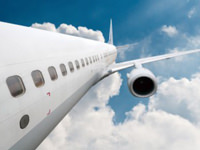
Today’s airliners use a mixture of fresh and recirculated air throughout the flight. The fresh air is drawn in through the engine intakes, is heated, chilled and filtered, mixed with the recirculated air and filtered again.
Boeing claims that between 94 and 99.9 percent of all airborne microbes are removed by their filters, and that the entire air is changed every two to three minutes.
In fact, the manufacturer states that the airline’s filter systems are as good as those found in most hospitals. So while it’s true you might catch a cold if the person hogging your armrest sneezes in your general direction, you’re unlikely to get one from the person in seat 18C. What is undeniable is how dry the air is in most airliners. In fact, some estimates put the humidity level at barely 12 percent, which is less than most deserts. Yikes!
Pee Pee Color
Urine isn’t exactly the nicest topic of conversation at the dinner table, but it is a great indicator of dehydration, a dangerous condition that can have severe consequences. On construction sites in some tropical countries that employ workers from non-tropical ones, it’s not uncommon to find warnings in washrooms alerting users to check the color of their urine.
The darker the urine, generally, the greater is the dehydration. Other symptoms can include a headache, dry mouth, lethargy and intense thirst. These are not signs to be ignored – severe dehydration can lead to seizures, hypovolemic shock, organ damage and even death.
Travelers are susceptible for a number of reasons. Sometimes we’re so distracted we simply forget to drink, or we struggle to find a clean safe water source. We can become dehydrated when active in high temperatures, or at high altitudes, or as a result of diarrhea and sickness.
Whatever the reason, if dehydration strikes it’s important to not only replenish your fluids but also add electrolyte supplements to restore important minerals that have been lost. You can get electrolyte packets at most pharmacies before you travel.
Quietest Place on Earth

Of course, there are few places in the world truly quiet, but for many the exclusion of manufactured sound is good enough. Whether lying in a tent listening to a breeze dancing through nearby trees or sitting in a desert so quiet you can actually hear the sand shifting, silence can be truly golden.
If you’re seeking the quietest place on earth, look no further than the anechoic chamber at Orfield Laboratories in Minnesota – though keep in mind that true silence, apparently, isn’t always so pleasant.
The 99.9 percent sound-absorbent room is so silent that it’s said a violinist once pounded on the door to be let out after only a few seconds – of course, that turned out to be nothing but a rumor, but it does make you think.
Visits cost $100 per person, with a $200 minimum, and reservations are required. Now quiet please, I’m thinking.
Richter Scale
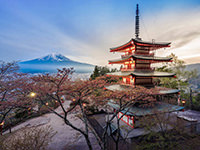
If you’re particularly seismic-phobic, you might be interested to know that the country that experiences the most shakers a year is Japan. Located in the Pacific Ocean’s infamous Ring of Fire and riding along a whole bunch of tectonic plates, Japan has had more than its share of earthquakes through the past decade, let alone through the centuries. (The country typically gets about 1,500 on average every year, though most are minor and cause minimal damage.)
But of course, the land of the rising sun is a fantastic destination on many a bucket list – so if you are planning a trip in the near future take comfort in knowing the country also has some of the world’s most stringent quake-resistant building codes, and one of the best earthquake-prep protocols on the planet.
Stinky Feet in The Sky
Flying is a bit of a strange phenomenon, when you really think about it. We humans are confined to a small metal capsule with 300-400 complete strangers for 12 hours or more, we have barely enough room to stretch our legs or anywhere to put our elbows.
The only place to walk is the periodic visit to a very small toilet, which invariably has a wet floor. We eat when someone else tells us to, and like naughty children we’re told by someone else when it’s bedtime (well, when to close the window shades).
But there are some things we don’t have to endure – and stinky feet, in my opinion, is right up on the list! Many people remove their shoes on long-haul flights, but for those trapped near someone with particularly odorous extremities just know you have the right to complain to a flight attendant.
If they share your nasal disdain, they may offer the offender airline socks (who knew there were such things as airline socks?); wield some industrial-strength air freshener; tell your stale mate to put his/her shoes back on; or simply assist you in moving to another seat. And if they don’t agree with your assessment, well, that’s what alcohol’s for!
Tribute to The Traveller’s Cheque

Not so long ago, any long trip included a wad of traveller’s cheques – which you used when travelling instead of cash – that were carefully tucked into a money belt. First issued in London in 1772, by the end of the 19th century both American Express and Thomas Cook had similar products, which soon became as indispensable to a traveler as a pith helmet and flask of gin.
Accepted everywhere and with built-in security measures, traveler’s cheques were the Esperanto of street-level international finance.
By the 1990s however, the demand for the replacement-cash began to wane as people turned to credit and debit cards and ATMs. Fewer retailers accepted them, and even hotels and banks began to huff and puff and place high fees and currency restrictions on what cheques they’d redeem.
Although still possible to purchase, if you do, find out in advance if you’ll be able to exchange/cash them at your destination, as it’s no longer something travelers can assume. Ah, miss those little guys!
UV Radiation on High

Today, with rising rates of melanoma, it’s generally all about avoiding the sun or using the strongest SPF. While it’s been well documented that Australia typically has the greatest number of melanoma cases and the highest mortality rates – though as of 2016 New Zealand surpassed Australia for the first time – that’s not necessarily because of its geography.
Instead, many experts attribute it to the fairer skin many Aussies inherited from their British and European ancestors, their outdoor lifestyles and a generally favorable climate. For a geographical link to skin cancer, look no further than high altitudes, where the thinner atmosphere makes the sun’s rays that bit more dangerous.
Many mountain tourists and alpine trekkers tend to forget this – yet a very high SPF is arguably even more important on a mountain pass than it is on a beach.
Volkswagen Beetle

First, always park your car somewhere secure. No dark alleyways or unlit parking lot corners, even if it saves you a few euros.
Second, remove anything that advertises you’re a tourist: hide maps, guidebooks and certainly luggage that could be seen by passersby with wandering eyes.
Finally, never never! leave anything of any value in a car. Keep luggage, cameras, cellphones, tablets and all documents in your hotel room or hotel safe, and just to emphasize there’s nothing of any value, leave your glovebox wide open to discourage any light-fingered opportunists from a quick smash and grab.
World’s Highest Restaurant

The highest restaurant in the world is currently At.mosphere, which sits a staggering 1,450 feet (442 meters) above the city of Dubai in the Burj Khalifa tower.
The highest revolving restaurant in the world is the 1,387-foot-high (423 meters) TWIST, which spirals above Guangzhou, China.
Although the Eiffel Tower has two gourmet restaurants – one having a Michelin star – both are modestly located on the second and third levels, not the tower’s top, alas.
However, according to the Guinness Book of World Records, the highest restaurant ever was located in Bolivia. Perched atop the Chacaltaya mountain in the Bolivian Andes was the country’s only ski resort, home to a modest eatery that was 17,519 feet (5,340 meters) above sea level.
Unfortunately, when the mountain’s glacier disappeared in 2009, so did much of the ski business and the restaurant with it, leaving the odd climber and winter skier who venture that way now forced to bring their own food!
XAI-XAI
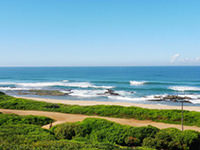
Formerly a Portuguese colony, some buildings in the country’s capital of Maputo have a beautiful but neglected colonial flair, while the Portuguese influence also extends to food and music.
The coast and islands around the city of Xai-Xai and elsewhere offer some of the finest snorkeling, scuba diving, fishing and just plain old sun-flaking in all of Africa. For wildlife lovers, there’s always Gorongosa National Park.
While its wildlife was decimated by fighting, poaching and landmines during the war, Gorongosa and its Big Game are slowly recovering, and situated as it is in an idyllic part of the country with spectacular scenery, it’s a must-see for any wildlife buff.
Perhaps best of all, Mozambique still doesn’t feature in most travellers’ bucket lists – making it a hidden treasure for the intrepid.
Yellow Snow
It’s long been claimed that the Inuit have dozens of different words for snow, but is it true? The story originated when 19th-century German-American anthropologist Franz Boas traveled across Baffin Island.
When he later published the first volume of his Handbook of American Indian Languages in 1911, he claimed there were hundreds of words and phrases for snow in the Eskimo-Aleut languages, depending on whether the snow was drifting or falling, blowing or slushy, glazed with ice or hard-packed, among other things.
Some have since disputed his findings, even labeling them The Great Eskimo Vocabulary Hoax (that’s actually a book). But other anthropologists believe Boas was correct.
Sadly, like many languages, some Inuit dialects aren’t as robust as they were in Boas’s time, and some of the words and phrases he encountered may have disappeared.
However, an anthropologist at the Smithsonian Arctic Studies Center points out that the Central Siberian Yupik language has more than 40 terms for snow, and the Inupiaq dialect of Alaska has 70 different terms for ice. And of course, Frank Zappa needed just one to make a hit record.
Zabaglione

Let’s talk about desserts. While, unfathomably, the whole world may not be in love with chocolate, many of its people traditionally end a meal with something sweet to cleanse the palate.
In Italy, a particular favorite is zabaglione, which is a light sweet made from egg yolks and sugar and known in France as sabayon. Indians love kulfi, a subcontinent version of ice cream; Egyptians share baklava with a number of neighboring nations; and some Scots like nothing better than a deep-fried Mars Bar.
So wherever you head out into the world, always save a bit of room for a spot of sweetness at the end of a meal – and, if in Italy, remember when ordering that the “g” in zabaglione is silent, as in Modigliani, gnu and Google!
 Expert eBooks Courses | Online-eBook-Download.com Latest digital books and courses, Tips & Tricks, How-to guides, free ebooks, software discounts, coupons & much MORE… Instant Download
Expert eBooks Courses | Online-eBook-Download.com Latest digital books and courses, Tips & Tricks, How-to guides, free ebooks, software discounts, coupons & much MORE… Instant Download


